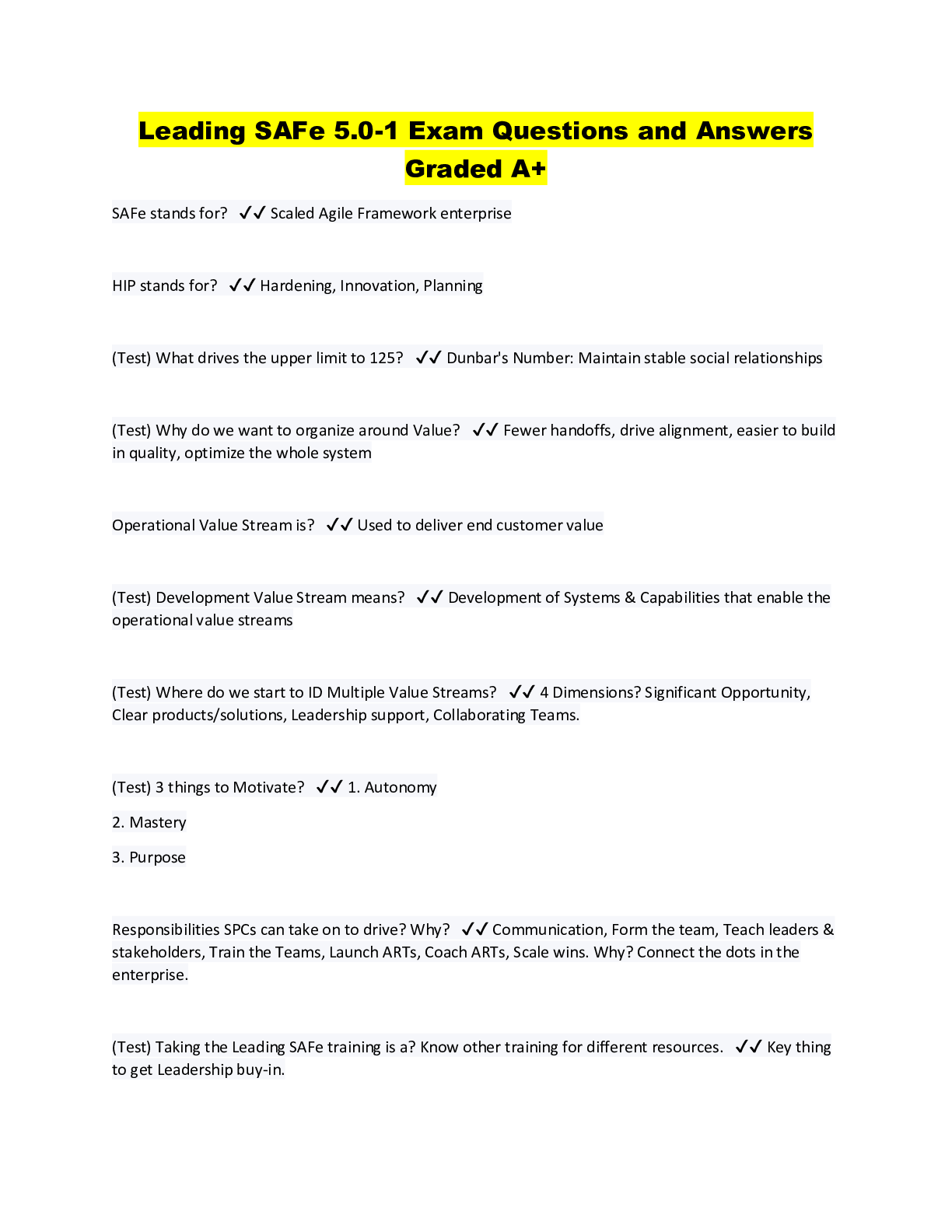Biology > Solutions Guide > Final BIO - Review for Midterm 1 (All)
Final BIO - Review for Midterm 1
Document Content and Description Below
I found your quiz to be correctly marked and please find below the main topics that you may consider for review: 1. You may review the definitions, similarities and dissimilarities of a negative an ... d a positive feedback loops…and based on these principles you may think aboutwhere quite a few positive feedback loops (such as a the initiation and transmission of nerve impulses (action potentials), child birth/release of oxytocin and alsoblood clotting) are categorized. If the response enhances or intensifies the stimulus, a system is operating by positive feedback. If the response reverses the stimulus, a system is operating by negative feedback. 2. See the definition of the anatomical position. Then, you may need to review the anatomical positions and planes ( frontal, transverse, sagittal and oblique etc..). Planes and SecYou will also study parts of the body relative to planes, imaginary flat surfaces that pass through the body parts (Figure 1.7). A sagittal plane (SAJ-i-tal; sagitt- = arrow) is a vertical plane that divides the body or an organ into right and left sides. More specifically, when such a plane passes through the midline of the body or an organ and divides it into equal right and left sides, it is called a midsagittal plane or a median plane. The midline is an imaginary vertical line that divides the body into equal left and right sides. If the sagittal plane does not pass through the midline but instead divides the body or an organ into unequal right and left sides, it is called a parasagittal plane (para- = near). A frontal or coronal plane (kō-RŌ-nal; corona = crown) divides the body or an organ into anterior (front) and posterior (back) portions. A transverse plane divides the body or an organ into superior (upper) and inferior (lower) portions. Other names for a transverse plane are a crosssectional or horizontal plane. Sagittal, frontal, and transverse planes are all at right angles to one another. An oblique plane (ō-BLĒK), by contrast, passes through the body or an organ at an oblique angle (any angle other than a 90-degree angle). 3. See the definitions of the most important life processes and the basic features of each of the basic life processes of the human body. Basic Life Processes Certain processes distinguish organisms, or living things, from nonliving things. Following are the six most important life processes of the human body: 1. Metabolism (me-TAB-ō-lizm) is the sum of all chemical processes that occur in the body. One phase of metabolism is catabolism (ka-TAB-ō-lizm; catabol- = throwing down; -ism = a condition), the breakdown of complex chemical substances into simpler components. The other phase of metabolism is anabolism (a-NAB-ō-lizm; anabol- = a raising up), the building up of complex chemical substances from smaller, simpler components. For example, digestive processes catabolize (split) proteins in food into amino acids. These amino acids are then used to anabolize (build) new proteins that make up body structures such as muscles and bones. 2. Responsiveness is the body's ability to detect and respond to changes. For example, an increase in body temperature during a fever represents a change in the internal environment (within the body), and turning your head toward the sound of squealing brakes is a response to a change in the external environment (outside the body) to prepare the body for a potential threat. Different cells in the body respond to environmental changes in characteristic ways. Nerve cells respond by generating electrical signals known as nerve im [Show More]
Last updated: 3 years ago
Preview 1 out of 50 pages
.png)
Buy this document to get the full access instantly
Instant Download Access after purchase
Buy NowInstant download
We Accept:

Reviews( 0 )
$10.50
Can't find what you want? Try our AI powered Search
Document information
Connected school, study & course
About the document
Uploaded On
Jun 26, 2021
Number of pages
50
Written in
All
Additional information
This document has been written for:
Uploaded
Jun 26, 2021
Downloads
0
Views
213



.png)
.png)




.png)
.png)





 V1-V2.png)





.png)

